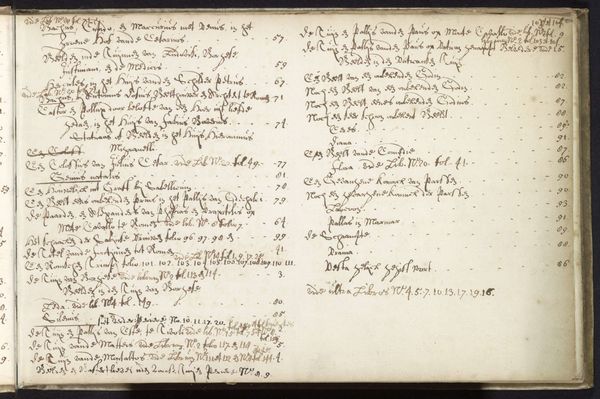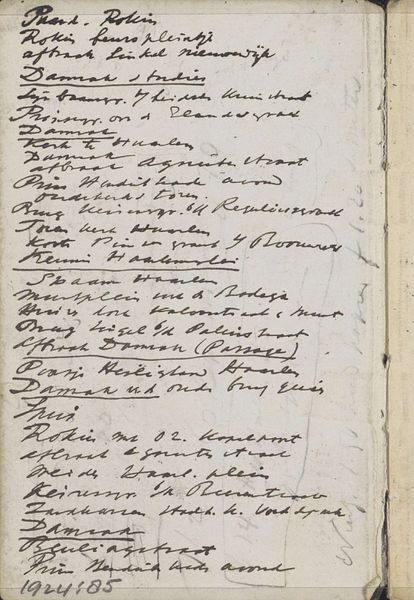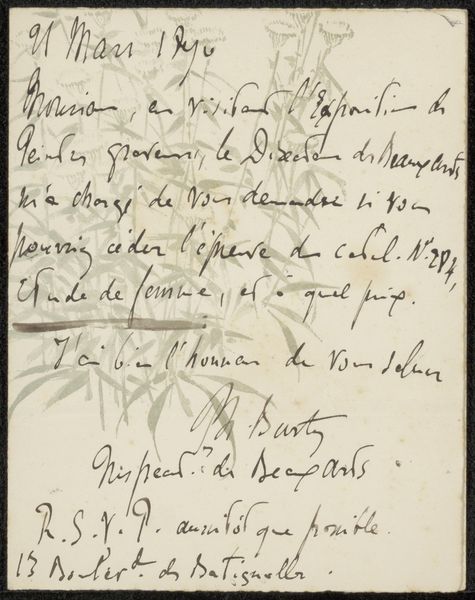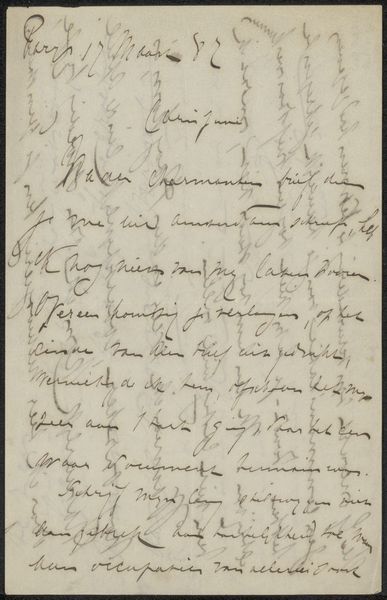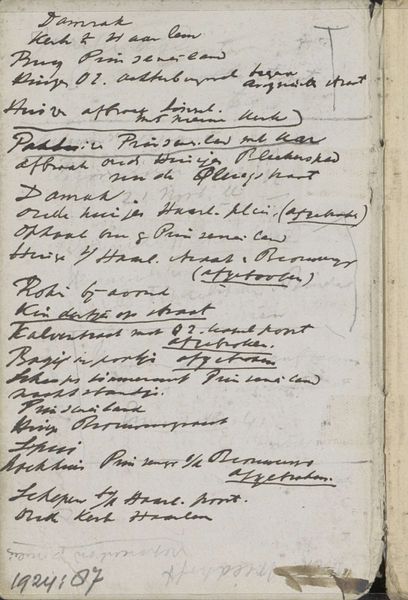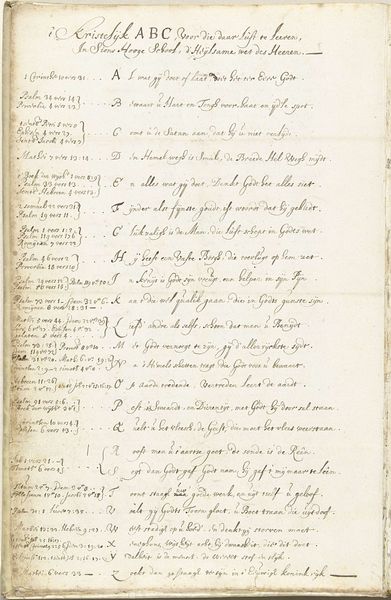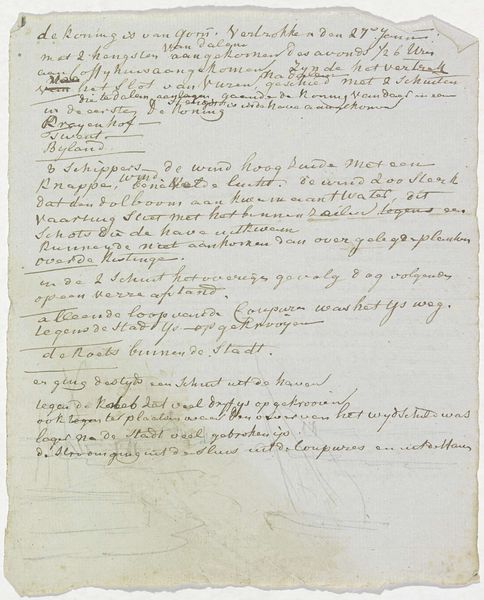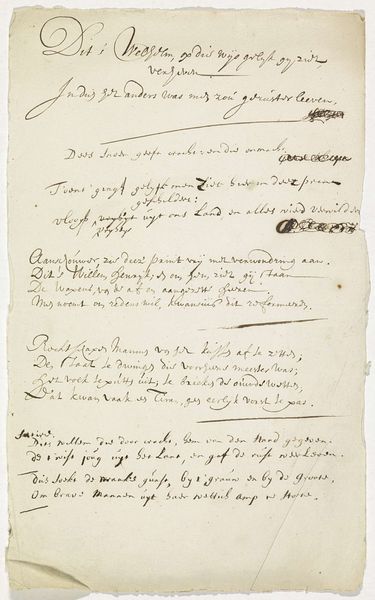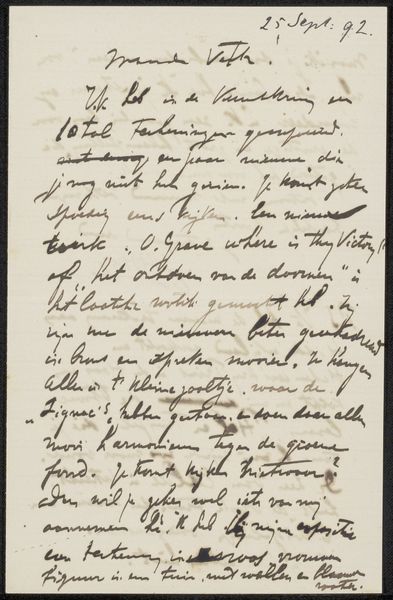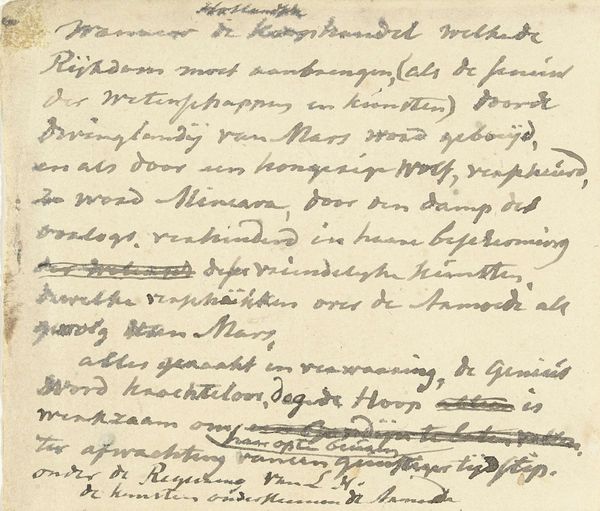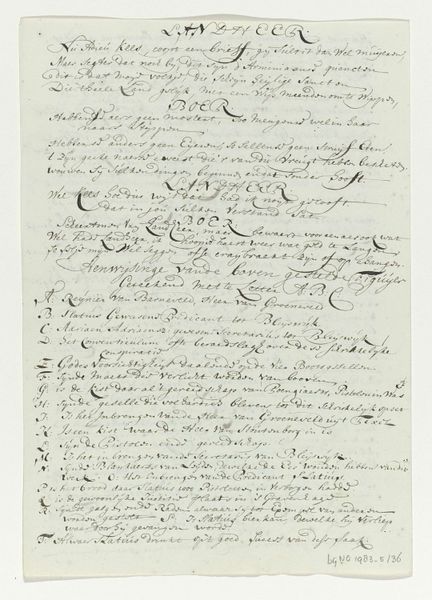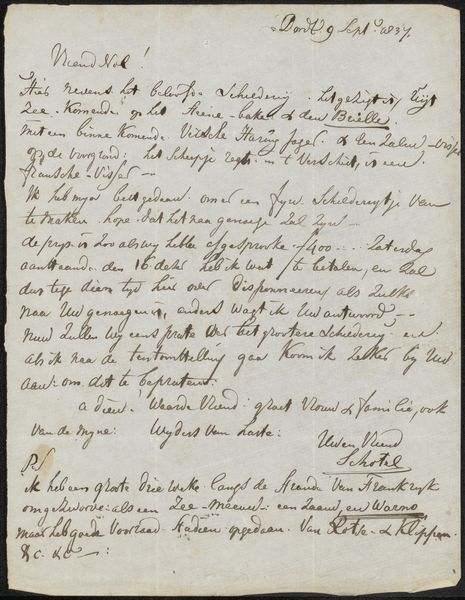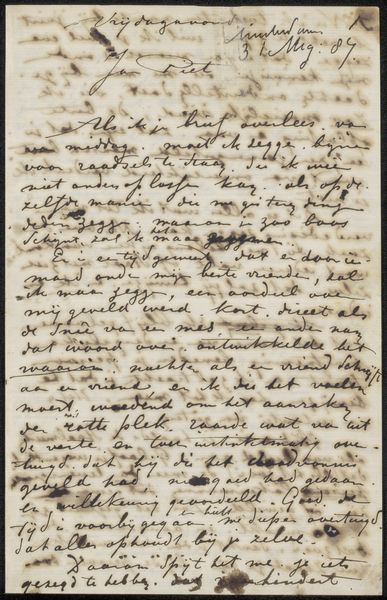
Skitsebogsblad med fortegnelse over alt hvad der var afmalet på Hamlets skjold 1743 - 1809
0:00
0:00
drawing, paper, ink
#
portrait
#
drawing
#
narrative-art
#
paper
#
personal sketchbook
#
ink
#
northern-renaissance
#
miniature
Dimensions: 191 mm (height) x 137 mm (width) (bladmaal)
Curator: This sketchbook leaf by Nicolai Abildgaard, dating from around the late 18th century, is called "Skitsebogsblad med fortegnelse over alt hvad der var afmalet på Hamlets skjold." It seems to be a preparatory work using ink on paper, and the density of text creates an interesting overall texture. What strikes you about it? Editor: I’m struck by the density of the writing. It gives the work a chaotic but also strangely organized feel. There’s also that tiny figure sketch on the side that has a totally different energy. How do you read this combination of text and image? Curator: Abildgaard's choice to meticulously list elements intended for Hamlet's shield emphasizes the formal structure beneath the narrative. Consider how the artist employs a systematic layout to categorize scenes. This deliberate arrangement allows us to analyze each segment – its semiotic function within the overarching narrative framework. Editor: So, even a list can be artful if you're arranging the elements in a deliberate manner. It becomes about form as much as function, right? Curator: Precisely. What visual rhythms are established through the repeated forms of written lines, and how does this relate, conceptually, to the narrative being conveyed? The structural organization mirrors the thematic organization of Hamlet's story itself. The ink serves to illustrate the narrative. Editor: That makes sense. The visual echoes of repeated lines create their own layer of meaning and prepare us for interpreting the scene itself. So it's not just about the image, it's about how it's presented. Curator: Indeed, it's about decoding the structural elements – the interplay of script, space, and form – that constitute the artistic message. And with a single quick gesture we are gifted with dynamic play on form. Editor: Thank you for showing me that even an ostensibly plain drawing can yield such a fascinating formal reading! I’ll be sure to consider an artist's structural choices more closely from now on.
Comments
No comments
Be the first to comment and join the conversation on the ultimate creative platform.
